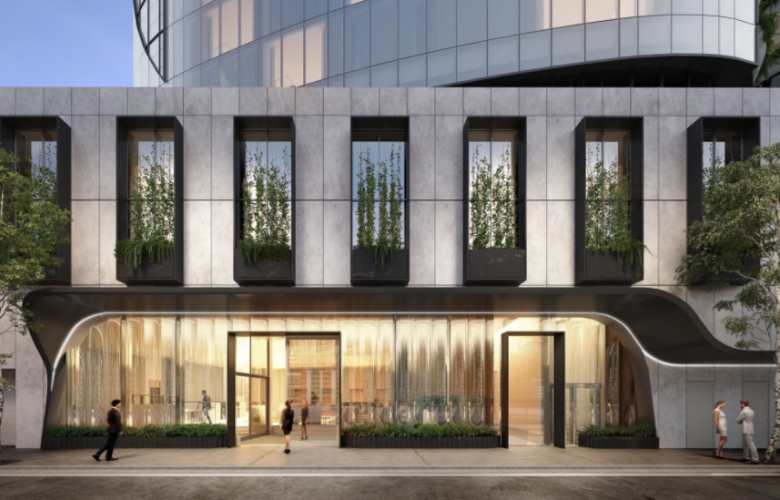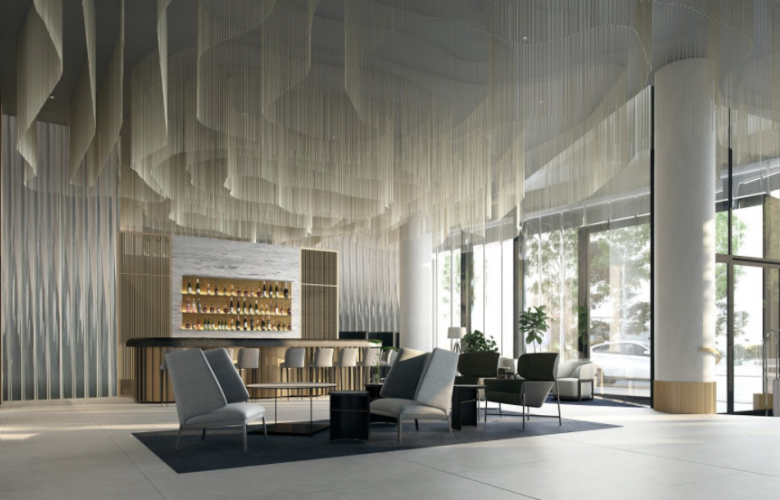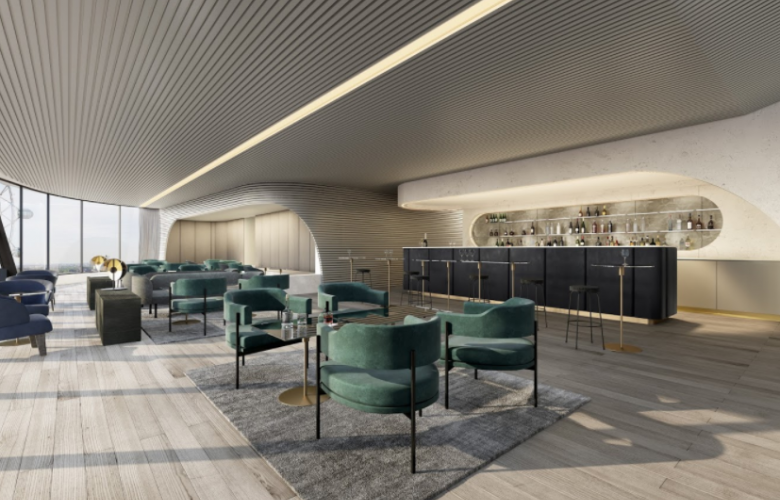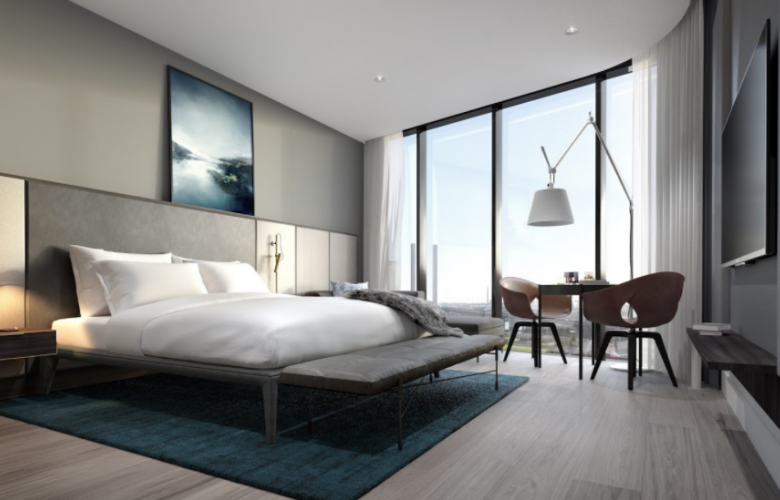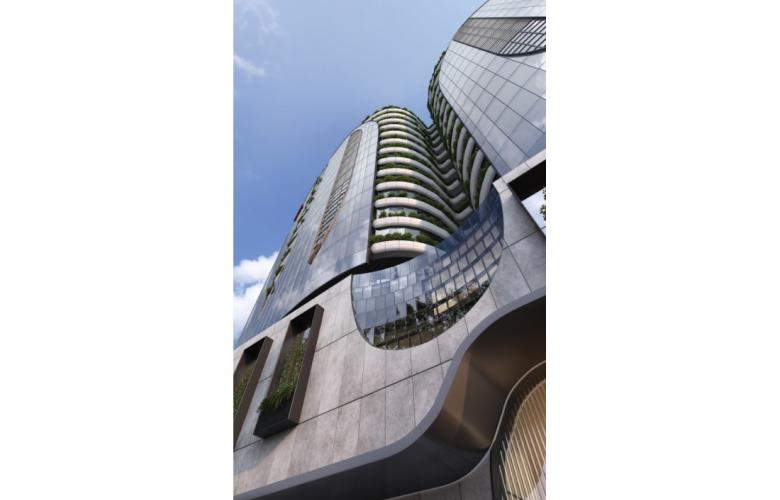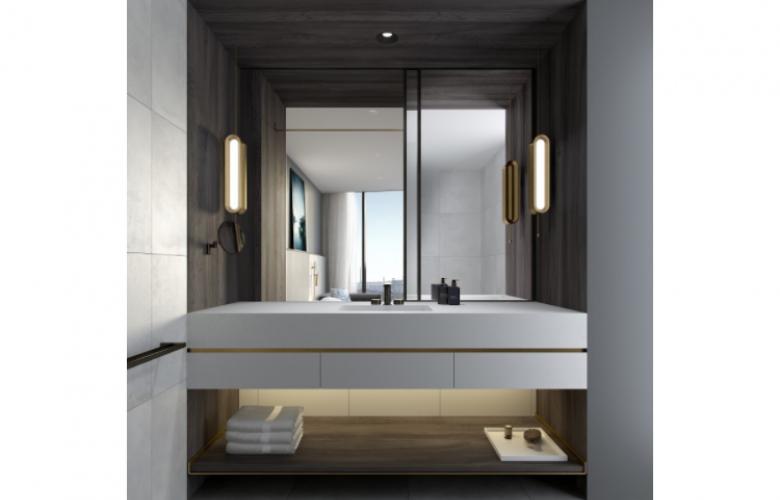First Marriott hotel to be built in Australia in 20 years
Contact
First Marriott hotel to be built in Australia in 20 years
Melbourne developer Capital Alliance has unveiled the first images of the first Marriott to be built in Australia in 20 years, showcasing a design that boldly illustrates the evolution of the traditional five-star hotel for a new generation of traveller who lives, works and plays much differently.
Gone are the staples of older five-star hotel rooms: carpet, heavily branded decor and clunky furniture such as closets, chests of drawers and writing desks.
Marriott Docklands, part of the $250 million mixed-use The Docklands project by local company Capital Alliance, will instead feature 200 rooms with clean timber flooring, beds sitting atop frames, a small table for dining but no desks and exposed joinery replacing closets.
The Marriott’s first new hotel in Australia in 20 years will open in 2020 and accommodate the demands of the modern traveller with abundant communal spaces to work and socialise in, including a 28-metre wet edge resort-style rooftop infinity pool and adjoining bar, a ground-level bar, a restaurant and a laneway cafe - all open to guests, residents and the community.
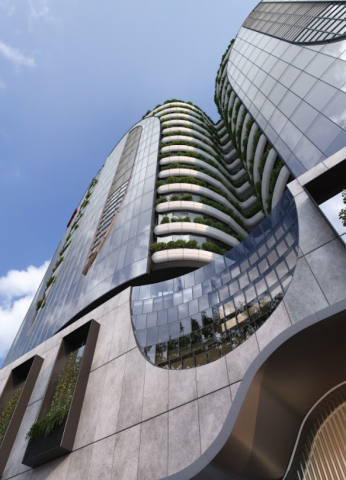
Designed by DKO Architecture, The Docklands will also offer the hotel lifestyle to working professionals, couples and even families living in 100 oversized one to three-bedroom apartments above the rectangular hotel podium, which sprouts into two curved petal-shaped towers of 17 levels each.
Marriott International senior director development for the Australia-Pacific region Richard Crawford said the new five-star hotel reflected the evolving needs of guests who used hotel rooms differently than in the past and had high expectations of hotel luxury based on sophisticated Asian, European and American hotel experiences.
“We’ve reinvented the hotel room as we’ve found that hotel guests don’t use desks in hotel rooms, preferring to lounge on beds or sofas or work in well-designed communal spaces with a relaxed atmosphere,” he said. “They also don’t want their clothes and possessions hidden away in storage.”
“Our guests do have a strong appreciation of great design and want to stay in high-end hotels that are luxurious while also reflecting the unique character of their location,” Mr Crawford said.
In a nod to Melbourne’s status as Australia’s fashion capital, the Marriott Docklands’ rooms will have the retail-influenced feature of wall racks that showcase guests’ fashion purchases or spring racing outfits rather than confining them to closets.
The Docklands will sit atop the newly renamed and revamped District Docklands shopping centre, featuring top retailers such as H&M and a soon-to-be-completed cinema complex. Hotel rooms and apartments will have spectacular views of the sunset in the west over the Bolte Bridge or views back towards the city centre.
Recognising that business travellers prefer to work on laptops in hotel bars and other chic communal spaces rather than hotel rooms, the Marriott’s stunning ground-level bar will include side tables designed to accommodate laptop computers.
Capital Alliance Founder and Chief Executive Mohan Du said The Docklands development would appeal to a broad demographic of business and leisure travellers of all ages while the much larger than average residential apartments were already tempting downsizers and young families to the convenience of apartment living.
“The city’s newest five-star hotel will enliven Docklands with its shared facilities for guests and residents that blur the lines between hotel and residential living, reflecting similar trends in mixed-use development that have reshaped the industry in New York and London,” Mr Du said.
While the world’s leading hotel brands once embraced a similar look throughout their properties in different cities, a new place-sensitive design ethos has led to greater individuality reflecting the hotel’s location with architecture and interior design that incorporates local materials and features the work of local artists.
The changing exterior lighting of the building will become a drawcard in itself and be enhanced by locally designed artworks within the hotel that creatively employ lighting and technology.
Following biophilic design principles that foster a human connection to nature, an integral part of the design of the entire building is the greenery, which starts with planter boxes on the lower levels and extends up to the higher floors through a verdant facade with built-in irrigation that serves as a privacy screen where the two towers are interlinked. Winter gardens on higher levels can be opened or closed to the elements.
A warm and inviting ground-level lobby with a bar and concierge desk welcomes hotel guests and residents who both have their own entrances and lifts.
Construction on The Docklands project is expected to begin this year and the opening of the hotel in late 2020.
Click here to view the DKO Architecture website.
Click here to view the Capital Alliance website.
See also:
Novotel Melbourne South Wharf opens ahead of schedule

